Review: 2019 Whyte S-120C - A Long and Slack Short-Travel Trail Bike
Long and slack aren't terms that are typically applied to a 120mm trail bike, but Whyte decided to defy convention with the new S-120C. It may not have a ton of travel, but its geometry numbers look like they were lifted from an enduro bike, with a 65.6-degree head angle, and a 480mm reach on a size large.
The S-120C Works is the top offering in the three model lineup, with a price tag of $5,299 USD. It's spec'd with the newest XTR drivetrain components, a Fox 34 Stepcast fork, and Whyte's own Trail 27 carbon wheels. Our test bike arrived with an early set of the new XTR cranks, but due to production issues those won't be making it to the market, at least not for a while. In the meantime, Race Face's Next R cranks will be taking their place.
The S-120C Works is the top offering in the three model lineup, with a price tag of $5,299 USD. It's spec'd with the newest XTR drivetrain components, a Fox 34 Stepcast fork, and Whyte's own Trail 27 carbon wheels. Our test bike arrived with an early set of the new XTR cranks, but due to production issues those won't be making it to the market, at least not for a while. In the meantime, Race Face's Next R cranks will be taking their place.
Whyte S120C Works Details
Travel: 120mm front/rear
Wheel size: 29"
Head angle: 65.6º
Chainstay length: 430mm
Frame construction: Carbon front triangle, aluminum swingarm
Sizes: S, M, L, XL
Weight: 27.8 lb / 12.6 kg (large, w/o pedals)
Price: $5299 USD as tested
More info: whyte.bike/collections
Travel: 120mm front/rear
Wheel size: 29"
Head angle: 65.6º
Chainstay length: 430mm
Frame construction: Carbon front triangle, aluminum swingarm
Sizes: S, M, L, XL
Weight: 27.8 lb / 12.6 kg (large, w/o pedals)
Price: $5299 USD as tested
More info: whyte.bike/collections
Construction and Features
The S-120 bears more than a passing resemblance to Whyte's 27.5” wheeled T-130 – in fact, the frames are identical, with only the shock length and wheel size to differentiate them. A carbon fiber front triangle is paired to an aluminum swingarm, with clevis style pivots at the seat and chainstays.
Whyte didn't go too wild trying to shave grams on the S-120 – the focus seems to have been more on creating a sturdy and reliable bike that could withstand the UK's foulest weather. From the integrated seatpost clamp, complete with a rubber seal around the post to keep water from entering the frame, to the extra layer of grease behind the anodized bearing covers (and lifetime bearing warranty), it's clear that the S-120's designers are familiar with riding in the muck and mire. There's a threaded bottom bracket, too, along with internal cable routing and room to mount a water bottle cage on top of the down tube.
The S-120 bears more than a passing resemblance to Whyte's 27.5” wheeled T-130 – in fact, the frames are identical, with only the shock length and wheel size to differentiate them. A carbon fiber front triangle is paired to an aluminum swingarm, with clevis style pivots at the seat and chainstays.
Whyte didn't go too wild trying to shave grams on the S-120 – the focus seems to have been more on creating a sturdy and reliable bike that could withstand the UK's foulest weather. From the integrated seatpost clamp, complete with a rubber seal around the post to keep water from entering the frame, to the extra layer of grease behind the anodized bearing covers (and lifetime bearing warranty), it's clear that the S-120's designers are familiar with riding in the muck and mire. There's a threaded bottom bracket, too, along with internal cable routing and room to mount a water bottle cage on top of the down tube.
Geometry & Sizing
The S120 is currently one of the longest and slackest bikes in the short travel trail bike category, with with a 65.6-degree head angle, and reach of 480mm for a size large. For comparison, Pivot's Trail 429 has a 67.3-degree head angle (with a 130mm fork) and a 460mm reach, and a Specialized Stumpjumper ST has a 67.5-degree head angle (also with a 130mm fork) and a 455mm reach.
Whyte quietly started using reduced offset forks on their bikes back in 2017, a trend that has since spread like wildfire throughout the industry. The S120 is no exception – the Stepcast Fox 34 has 44mm of offset, compared to the 51mm that was the norm not too long ago.
At 75-degrees the S120's seat angle is contemporary but not boundary-pushing, while the 430mm chainstay length is fairly typical for bikes in this category.
The S120 is currently one of the longest and slackest bikes in the short travel trail bike category, with with a 65.6-degree head angle, and reach of 480mm for a size large. For comparison, Pivot's Trail 429 has a 67.3-degree head angle (with a 130mm fork) and a 460mm reach, and a Specialized Stumpjumper ST has a 67.5-degree head angle (also with a 130mm fork) and a 455mm reach.
Whyte quietly started using reduced offset forks on their bikes back in 2017, a trend that has since spread like wildfire throughout the industry. The S120 is no exception – the Stepcast Fox 34 has 44mm of offset, compared to the 51mm that was the norm not too long ago.
At 75-degrees the S120's seat angle is contemporary but not boundary-pushing, while the 430mm chainstay length is fairly typical for bikes in this category.
Suspension Design
The S-120 uses a Horst Link suspension layout (Whyte call it Quad-4). The shock is driving by a u-shaped yoke that attaches to a link that runs from the seatstays to the seat tube.
Achieving the right balance of support and compliance is especially important on shorter travel bikes – all 120 millimeters need to be usable, but in a controlled way. To that end, Whyte focused on ensuring there was enough ramp up to prevent harsh bottom outs, while keeping the beginning of the stroke supple to help maintain traction.
Build Kit
| Specifications | ||
| Price | $5299 | |
| Travel | 120mm | |
| Rear Shock | Fox Float DPS Factory | |
| Fork | Fox Float Factory SC 34, Step Cast, 29", 120mm Travel, 44mm Offse | |
| Headset | FSA No. 42 Orbit ZS Plus | |
| Cassette | Shimano XTR M9100, 12-speed, 10-51t | |
| Crankarms | RaceFace NEXT R Carbon, Direct Mount 34T, 175mm | |
| Bottom Bracket | RaceFace BSA, 73mm, 30mm diameter | |
| Rear Derailleur | Shimano XTR M9100 12-Speed | |
| Chain | Shimano XTR CN-M9100 | |
| Shifter Pods | Shimano XTR M9100 | |
| Handlebar | RaceFace NEXT R Carbon, 800mm wide | |
| Stem | Whyte Gravity Stem, 40mm | |
| Grips | Whyte Lock-on V Grip | |
| Brakes | Shimano XTR BR-9120 | |
| Hubs | Shimano MT900 | |
| Spokes | DT Swiss Competition | |
| Rim | Whyte 26mm Carbon Hookless | |
| Tires | Maxxis Forekaster / Maxxis Crossmark | |
| Seat | Whyte Custom Team | |
| Seatpost | Bike Yoke Revive, 30.9mm, S 125mm Travel, M/L/XL 160mm Travel, XTR MT800 I-Spec EV Remote | |
Test Bike Seutp
Getting the S-120 set up was a straightforward affair, and my final suspension settings didn't deviate too much over the course of the test period. I ran 165 psi in the Fox DPS shock to achieve 30% sag, and 73 psi in the Stepcast 34, with one token installed.
In the past, a bike like this would have arrived with a long stem and narrow bars, but thankfully those days are rapidly becoming distant memories. I trimmed the 800mm Next R bars down to 780mm, and left the 40mm stem in place.
I did end up swapping out the tires for part of the test period once winter set in. The Forekaster / Crossmark combo works well in dry to damp conditions, but once things turned really wet and muddy (and then snowy), it was time to put on a meatier tire combo in order to keep from drifting off trail.
Mike Kazimer
Location: Bellingham, WA, USA
Age: 36
Height: 5'11"
Inseam: 33"
Weight: 160 lbs
Industry affiliations / sponsors: None
Instagram: @mikekazimer
Location: Bellingham, WA, USA
Age: 36
Height: 5'11"
Inseam: 33"
Weight: 160 lbs
Industry affiliations / sponsors: None
Instagram: @mikekazimer
Climbing
The S-120 has a very roomy cockpit, even with a 40mm stem installed due to the long reach and 75-degree seat tube angle. I recently tested the Pole Machine, and while that bike is obviously situated in an entirely different category, it does share the same 480mm reach number as the S-120. The result of the S-120's slacker seat angle is that it has a 33mm longer top tube than the Pole, which meant that there was a stark contrast between the two bikes' seated climbing positions. I felt more stretched out on the S-120, while my position on the Machine was almost too upright for my tastes.
The bottom line? Reach numbers are an important part of the geometry equation, but top tube length shouldn't be ignored. I ended up sliding the seat all the way forward to achieve the positioning I was looking for, but it's something to keep in mind for riders who may be between sizes.
The overall ride quality of the S-120 while climbing or on rolling terrain is closer to a Cadillac than a Corvette. It'll rack up the miles on a big day of riding without putting up a fuss, but it has a calm, cruisy nature that separates it from a snappier bike like the Pivot Trail 429, or a Scott Spark. Uphill aficionados (yes, they do exist) would be better served by something a little lighter, and a little less slack – the muted handling of the S-120 isn't going to set a hill climber's heart aflutter. Granted, I didn't have any trouble cleaning the techy portions of my regular test track, but the S-120 didn't feel as energetic as I'd hoped; it takes a little more work to snake it through tighter sections of trail.
That being said, it is more responsive than a longer travel machine with similar numbers would be, due to the fact that there's less suspension to sag into. It pedals well with the shock in the fully open position, although I did make use of the climb switch for longer, smoother dirt road grinds.
The S-120 has a very roomy cockpit, even with a 40mm stem installed due to the long reach and 75-degree seat tube angle. I recently tested the Pole Machine, and while that bike is obviously situated in an entirely different category, it does share the same 480mm reach number as the S-120. The result of the S-120's slacker seat angle is that it has a 33mm longer top tube than the Pole, which meant that there was a stark contrast between the two bikes' seated climbing positions. I felt more stretched out on the S-120, while my position on the Machine was almost too upright for my tastes.
The bottom line? Reach numbers are an important part of the geometry equation, but top tube length shouldn't be ignored. I ended up sliding the seat all the way forward to achieve the positioning I was looking for, but it's something to keep in mind for riders who may be between sizes.
The overall ride quality of the S-120 while climbing or on rolling terrain is closer to a Cadillac than a Corvette. It'll rack up the miles on a big day of riding without putting up a fuss, but it has a calm, cruisy nature that separates it from a snappier bike like the Pivot Trail 429, or a Scott Spark. Uphill aficionados (yes, they do exist) would be better served by something a little lighter, and a little less slack – the muted handling of the S-120 isn't going to set a hill climber's heart aflutter. Granted, I didn't have any trouble cleaning the techy portions of my regular test track, but the S-120 didn't feel as energetic as I'd hoped; it takes a little more work to snake it through tighter sections of trail.
That being said, it is more responsive than a longer travel machine with similar numbers would be, due to the fact that there's less suspension to sag into. It pedals well with the shock in the fully open position, although I did make use of the climb switch for longer, smoother dirt road grinds.
Descending
The S-120 may have middle-of-the-road climbing abilities for a 120mm bike, but the good news is that it punches above its travel bracket when gravity takes over. The shorter travel obviously means it's less forgiving of mistakes, but there's no need to tiptoe through technical sections of trail - even when switching from a long-travel beast to the S-120 I didn't have to drastically change my riding style thanks to the familiar-feeling geometry.
Sure, it's not as plush as those big rigs, but the travel it has is very well managed by the DPS shock and 34 fork, with plenty of support for pedaling and pumping, and to keep it from bottoming out on bigger drops. Just the fact that I felt comfortable hitting bigger drops on the S-120 is a testament to the level of confidence its geometry inspires. I do think a 130mm fork would have been a better spec choice – there were a few times when a little extra travel up front would have been appreciated.
Overall, the S-120 has a calm and stable nature as opposed to being poppy and playful, and it's better suited to going fast instead of taking part in impromptu trailside jib sessions. The long front center and slack head angle make it best suited to speeding through rolling terrain, and treating the trail like a natural pumptrack is the key to maintaining a good pace. It's not the most nimble machine in this category, but the flipside is that it feels more composed on steeper trails than the vast majority of 120mm bikes out there.
The S-120 may have middle-of-the-road climbing abilities for a 120mm bike, but the good news is that it punches above its travel bracket when gravity takes over. The shorter travel obviously means it's less forgiving of mistakes, but there's no need to tiptoe through technical sections of trail - even when switching from a long-travel beast to the S-120 I didn't have to drastically change my riding style thanks to the familiar-feeling geometry.
Sure, it's not as plush as those big rigs, but the travel it has is very well managed by the DPS shock and 34 fork, with plenty of support for pedaling and pumping, and to keep it from bottoming out on bigger drops. Just the fact that I felt comfortable hitting bigger drops on the S-120 is a testament to the level of confidence its geometry inspires. I do think a 130mm fork would have been a better spec choice – there were a few times when a little extra travel up front would have been appreciated.
Overall, the S-120 has a calm and stable nature as opposed to being poppy and playful, and it's better suited to going fast instead of taking part in impromptu trailside jib sessions. The long front center and slack head angle make it best suited to speeding through rolling terrain, and treating the trail like a natural pumptrack is the key to maintaining a good pace. It's not the most nimble machine in this category, but the flipside is that it feels more composed on steeper trails than the vast majority of 120mm bikes out there.
How does it compare?
The S-120 isn't your typical trail bike, but the Transition Smuggler comfortably sits in a similar niche. Both bikes have 120mm of rear travel, although the Smuggler gets a 140mm Fox 34 versus the 120mm Stepcast 34 on the S-120. Neither bike qualifies as a feather weight, with a with a total weight between 28 - 29 pounds depending on the tire choice.
The S-120 has a more efficient feel, especially during out of the saddle pedaling, and was more likely to use the climb switch on the Smuggler due to the fact that it sunk into its travel more easily. The Smuggler does have a slightly shorter reach and a steeper seat angle, which created a better seated climbing position for me, but both bikes are a welcome departure from the old-school, steep and sketchy geometry that used to prevail.
The extra 20mm of travel up front on the Smuggle goes a long way, and I felt more comfortable letting it all hang out on that bike. The Smuggler's reverse mullet configuration seemed to encourage a looser riding style, while I had to stay a little more focused on the Whyte.
Pivot's 429 Trail is aimed at the same type of rider, although that bike has a much crisper feel when climbing. It feels more like a traditional trail bike, with quick and snappy handling, although it doesn't have the same level of surefooted stability that the S-120 demonstrates on the descents.
Technical Report
XTR M9100 brakes: : The new XTR brakes now use a four piston caliper along with a redesigned lever, a revision that's claimed to deliver more power and better modulation. I didn't have any issues with the amount of power, but the inconsistent lever feel that was present on the prior version still reared its ugly head. Even after a fresh bleed the feel at the lever was different almost every time I pulled it. Things got even worse at the end of the test period, when temperatures dropped below freezing. Mineral oil and cold temps don't go together very well, and both levers had minimal movement before they engaged.
XTR drivetrain: The XTR brakes didn't impress me, but the 12-speed drivetrain sure did. The shifter's ergonomics are excellent, with well defined ridges on each paddle for traction, and crisp, snappy shifting. It's also possible to drop down two gears with only one push of the lever, something that's not possible with SRAM's shift levers. I can't say I noticed the extra tooth on the 10-51 cassette (versus Eagle's 10-50), but every shift was incredibly smooth and precise.
Maxxis Forekaster / Crossmark tires: The tire spec on the S-120 isn't that out of line for a trail bike, but at the very least I think a Forekaster front and rear would have been a better choice. The Crossmark is a good dry conditions tire, but it can be a little, um, “interesting” when things get wet. Or just go all in and run the time-tested DHF / DHR II combo – after all, the S-120 already feels more like a trail bike than an XC whippet.
Fox Stepcast 34: The Stepcast 34 is a very impressive fork, one that's capable of handling terrain that's well outside the scope of a typical cross-country ride. However, there is one downside – the travel is limited to 120mm. That's not a big deal if you're building up an ultralight XC or marathon race machine, but the S-120 is more than that. It's the type of bike that makes you wonder how it would handle with a little more travel up front, but unfortunately the only way to find out is to install a different fork, rather than performing a simple air spring swap. The 'regular' 34 would have been the better spec choice, a few extra grams be damned.
XTR M9100 brakes: : The new XTR brakes now use a four piston caliper along with a redesigned lever, a revision that's claimed to deliver more power and better modulation. I didn't have any issues with the amount of power, but the inconsistent lever feel that was present on the prior version still reared its ugly head. Even after a fresh bleed the feel at the lever was different almost every time I pulled it. Things got even worse at the end of the test period, when temperatures dropped below freezing. Mineral oil and cold temps don't go together very well, and both levers had minimal movement before they engaged.
XTR drivetrain: The XTR brakes didn't impress me, but the 12-speed drivetrain sure did. The shifter's ergonomics are excellent, with well defined ridges on each paddle for traction, and crisp, snappy shifting. It's also possible to drop down two gears with only one push of the lever, something that's not possible with SRAM's shift levers. I can't say I noticed the extra tooth on the 10-51 cassette (versus Eagle's 10-50), but every shift was incredibly smooth and precise.
Maxxis Forekaster / Crossmark tires: The tire spec on the S-120 isn't that out of line for a trail bike, but at the very least I think a Forekaster front and rear would have been a better choice. The Crossmark is a good dry conditions tire, but it can be a little, um, “interesting” when things get wet. Or just go all in and run the time-tested DHF / DHR II combo – after all, the S-120 already feels more like a trail bike than an XC whippet.
Fox Stepcast 34: The Stepcast 34 is a very impressive fork, one that's capable of handling terrain that's well outside the scope of a typical cross-country ride. However, there is one downside – the travel is limited to 120mm. That's not a big deal if you're building up an ultralight XC or marathon race machine, but the S-120 is more than that. It's the type of bike that makes you wonder how it would handle with a little more travel up front, but unfortunately the only way to find out is to install a different fork, rather than performing a simple air spring swap. The 'regular' 34 would have been the better spec choice, a few extra grams be damned.
Pros
+ Smooth, calm descender
+ Excellent suspension performance
+ Well spec'd for the price
Cons
- Seat angle could be steeper to match long reach
- On the heavier side of things for a 120mm bike
- Not the liveliest climber
Is this the bike for you?
Deciding who the S120 is for is a tricky proposition. It's not the bike if you're looking for a light and lively XC speed demon; instead, it's more of short travel shredder, a bike for the rider who doesn't want gobs of travel to dull their ride experience, but also doesn't want to be hampered by conservative geometry.
Deciding who the S120 is for is a tricky proposition. It's not the bike if you're looking for a light and lively XC speed demon; instead, it's more of short travel shredder, a bike for the rider who doesn't want gobs of travel to dull their ride experience, but also doesn't want to be hampered by conservative geometry.
Author Info:
Must Read This Week
[UPDATED] Final Elite XC Results & Overall Standings from the Mairiporã XC World Cup 2024
42454 views
42454 views
Sign Up for the Pinkbike Newsletter - All the Biggest, Most Interesting Stories in your Inbox
PB Newsletter Signup
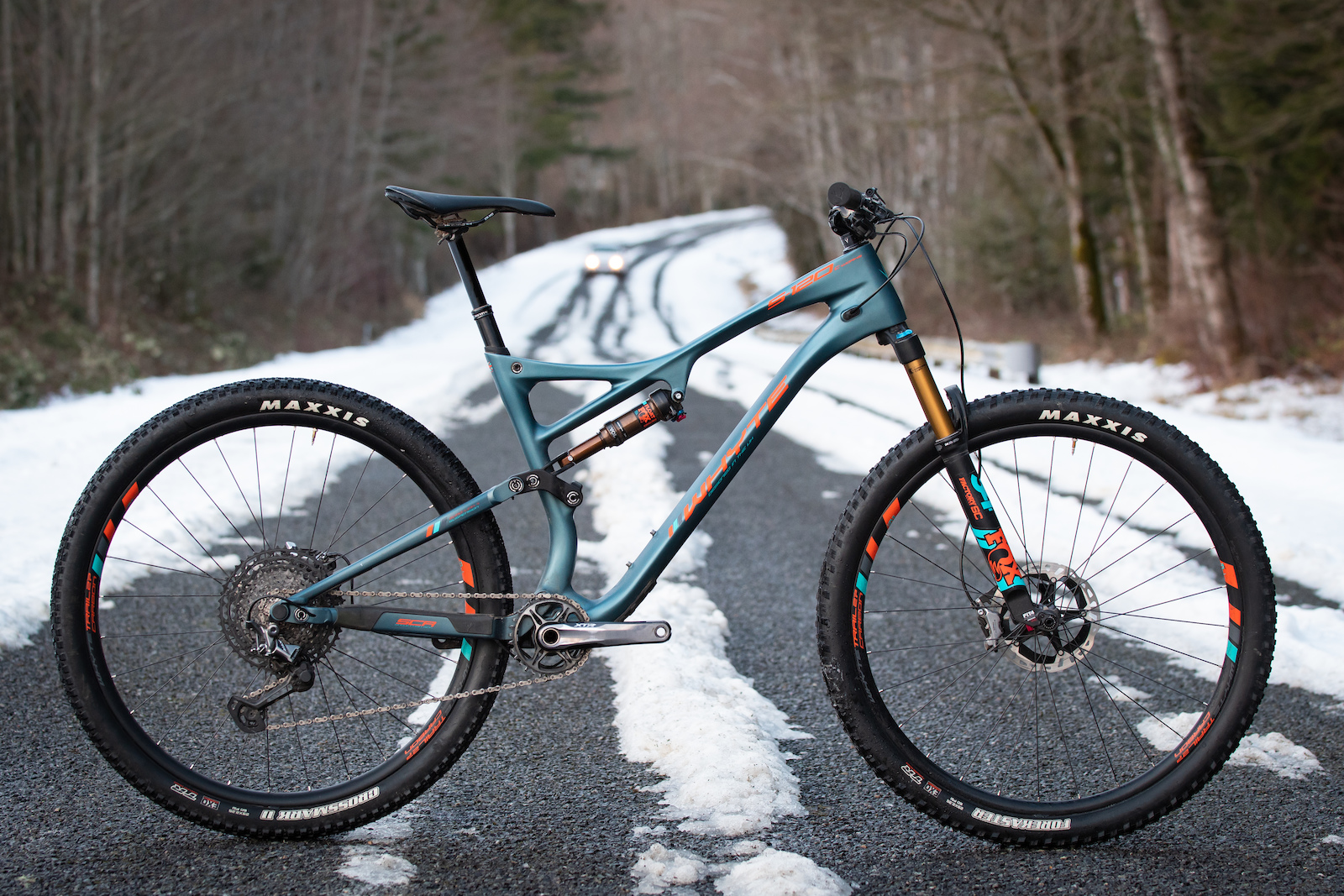
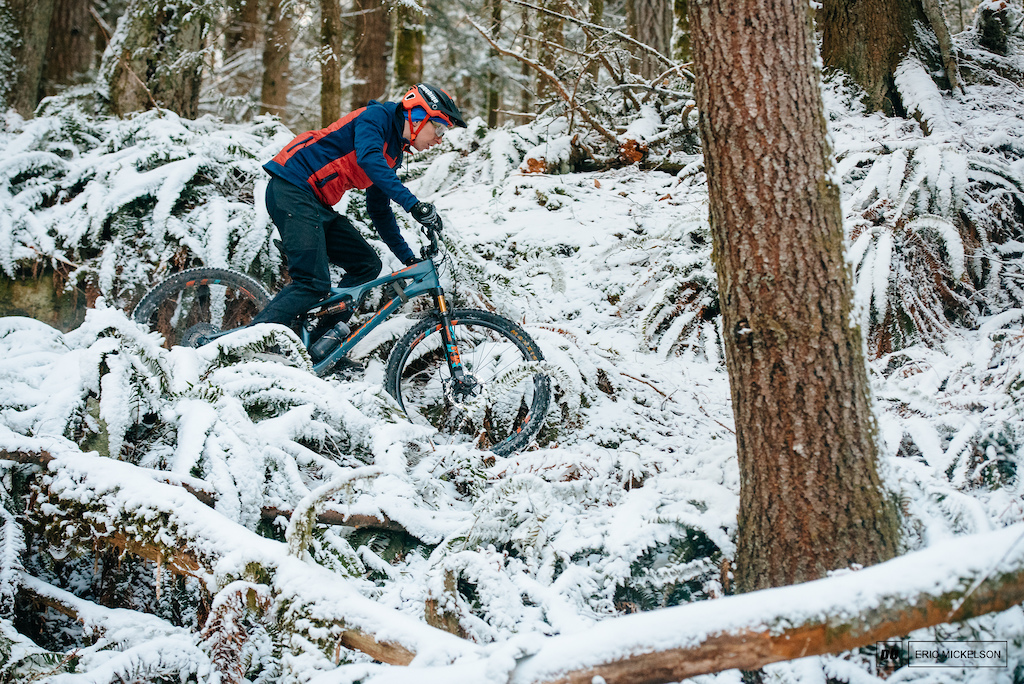
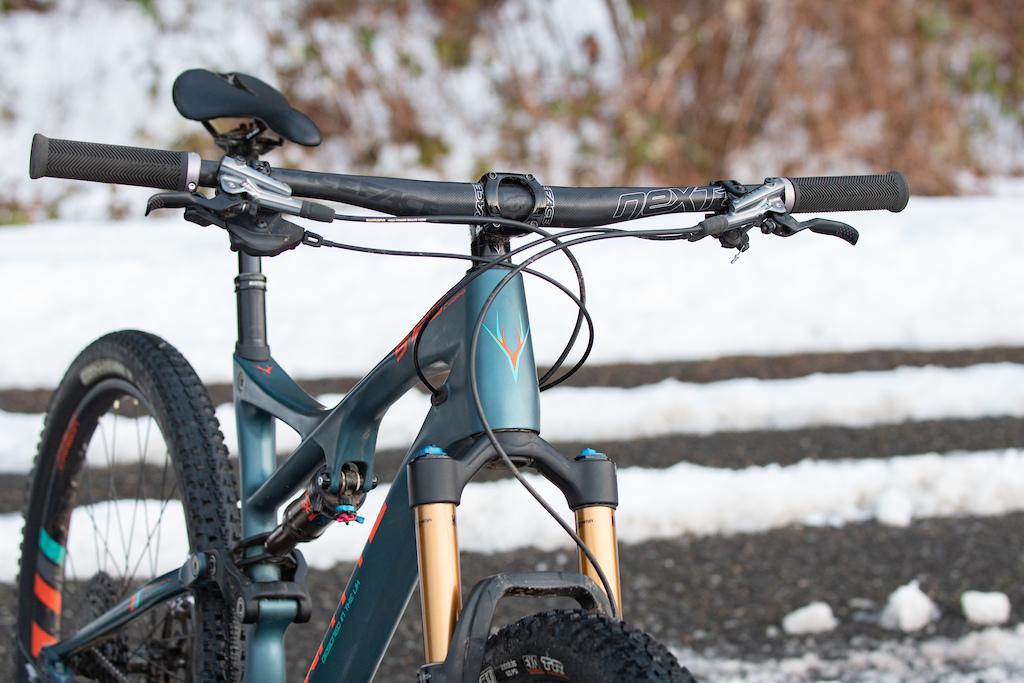
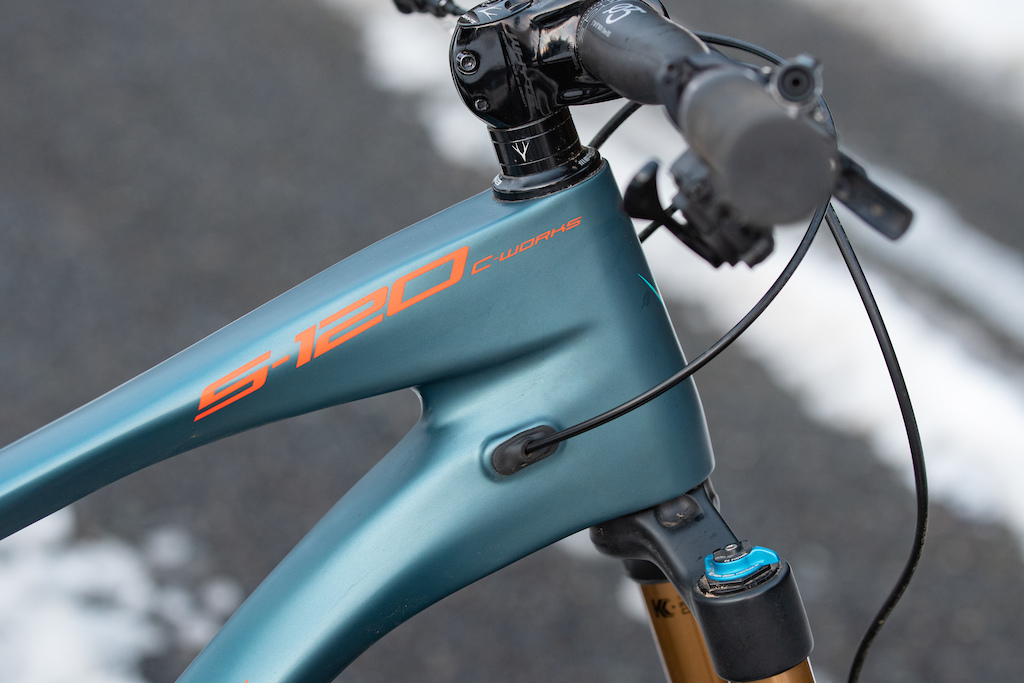
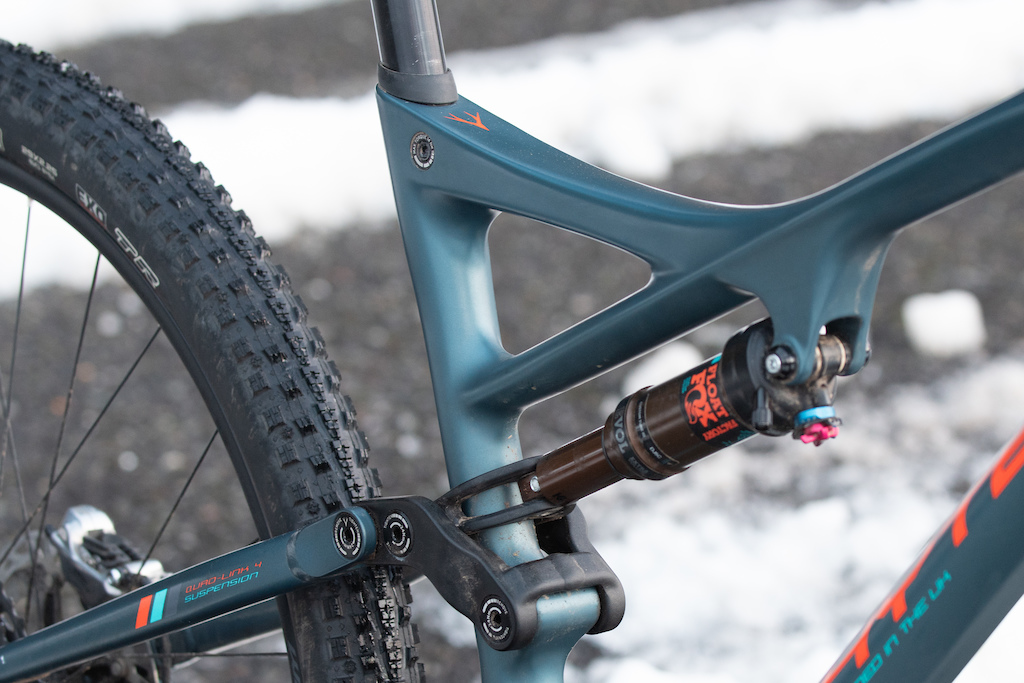
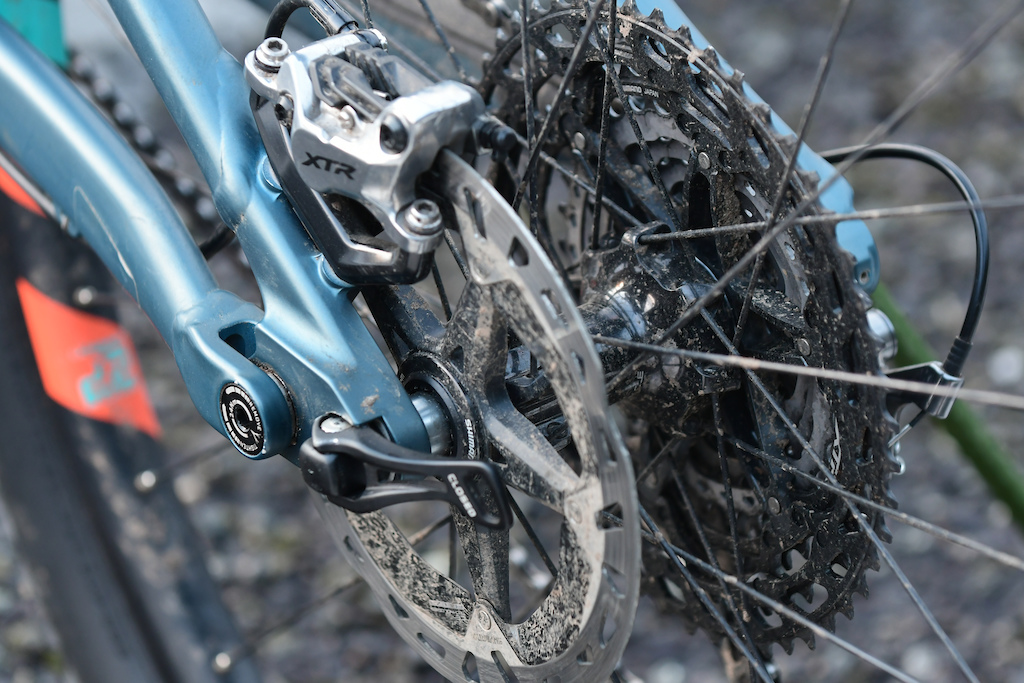

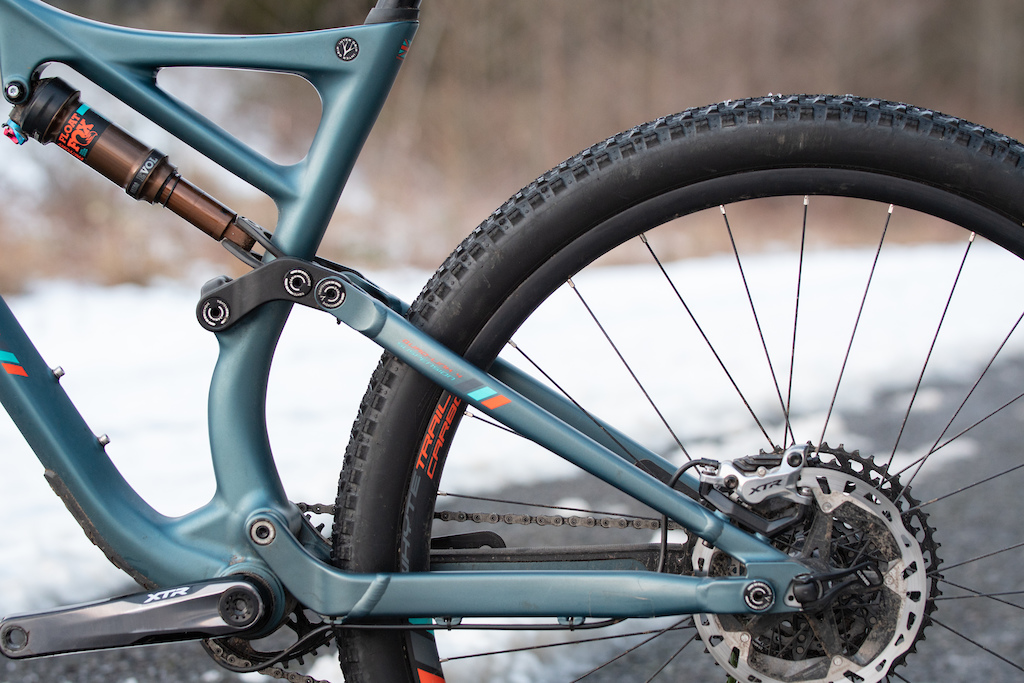
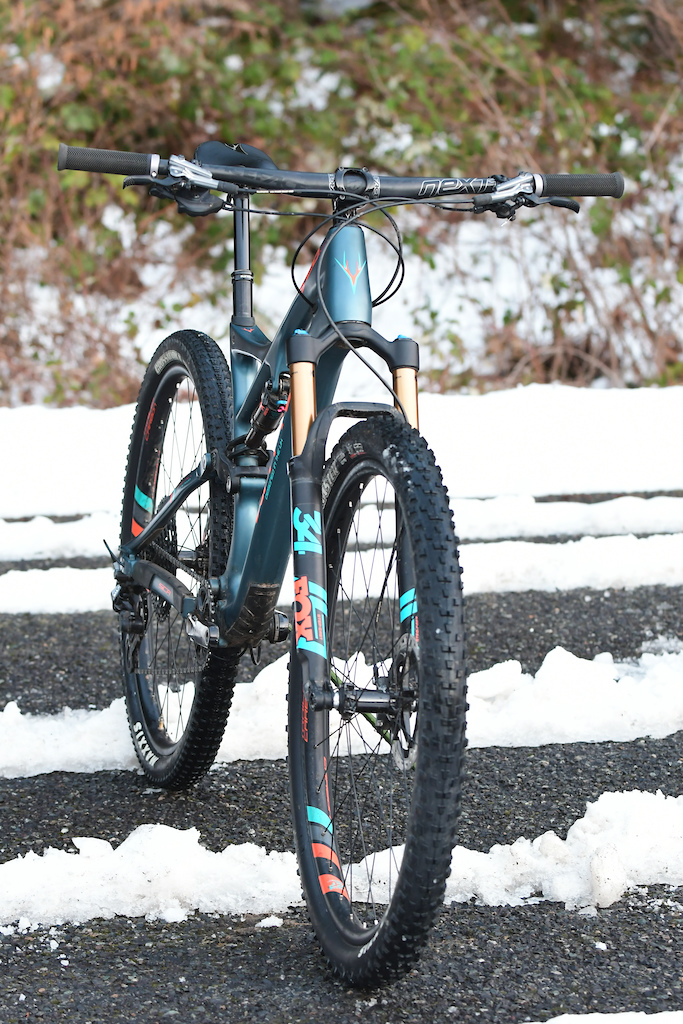
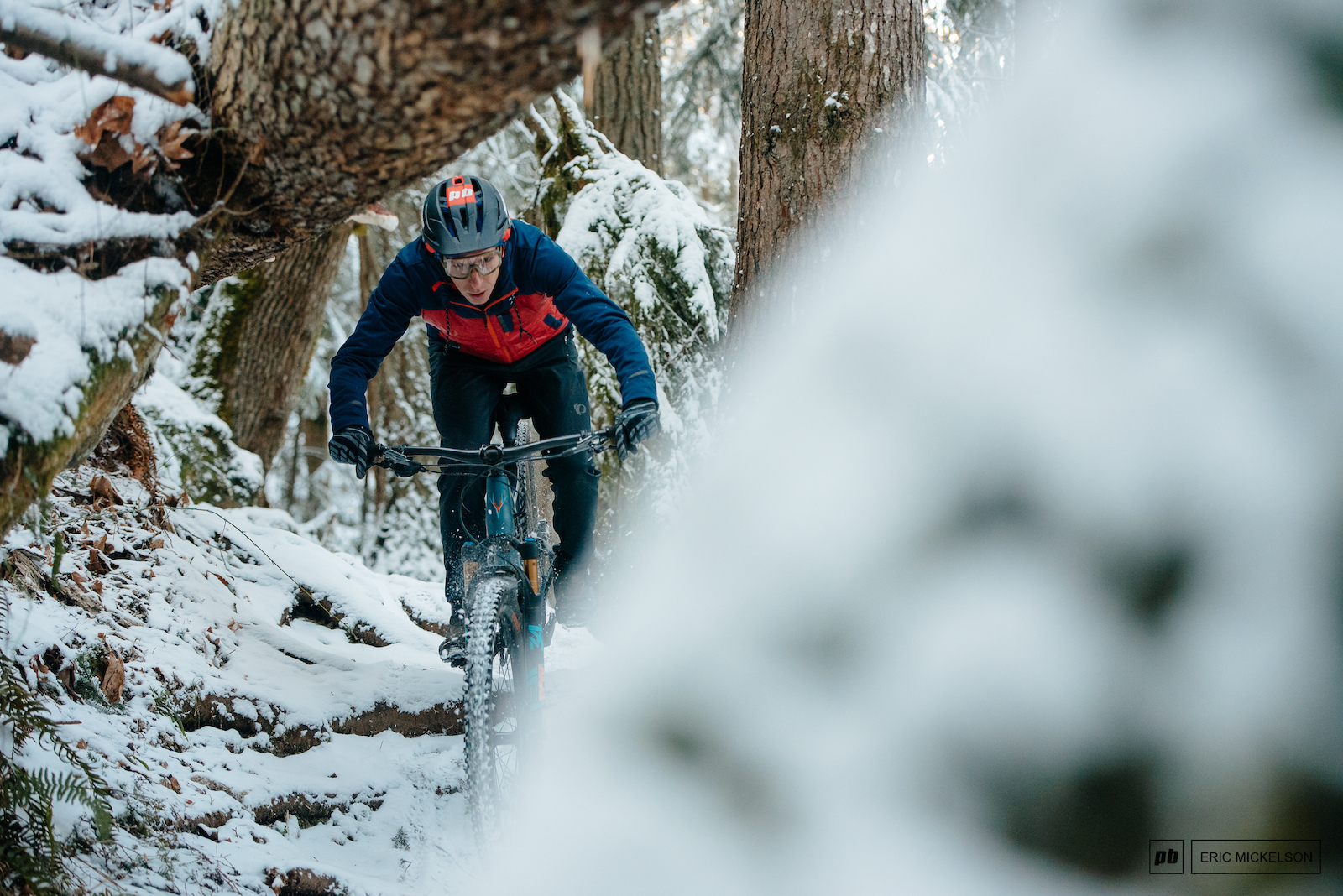

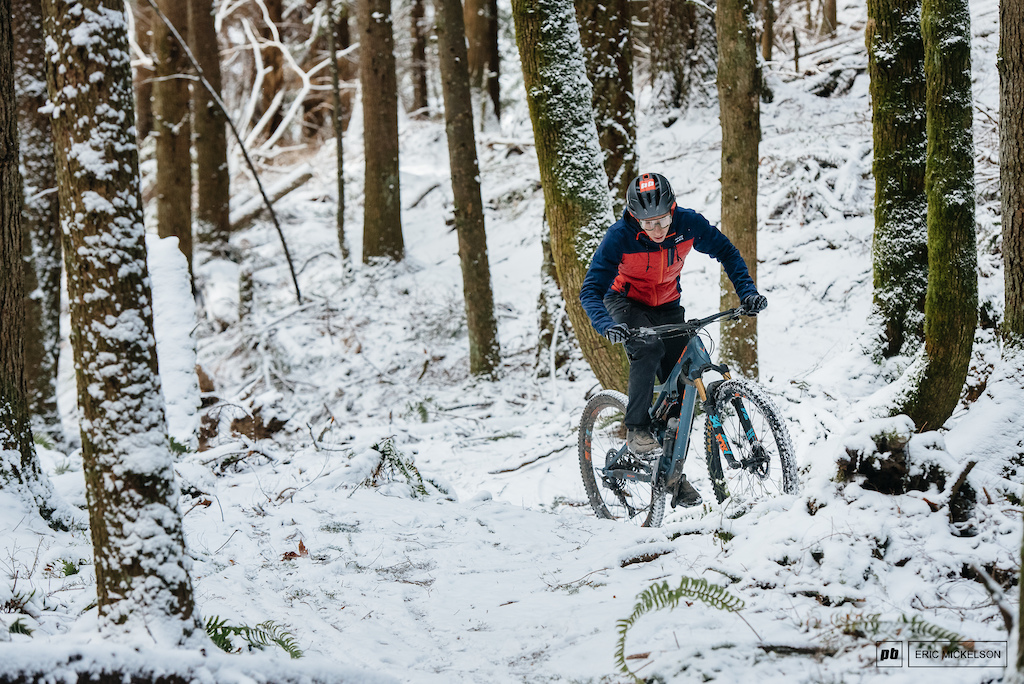
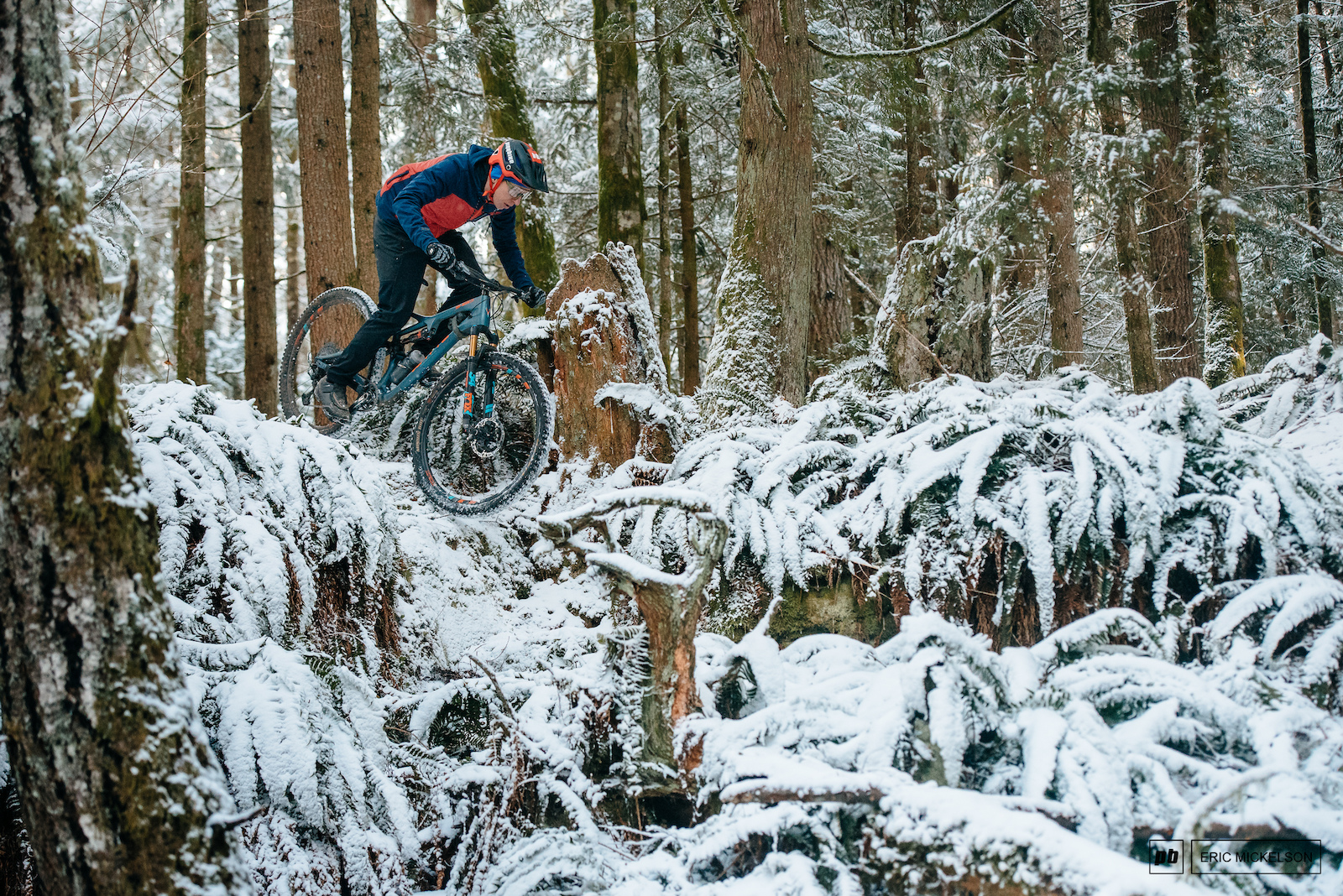

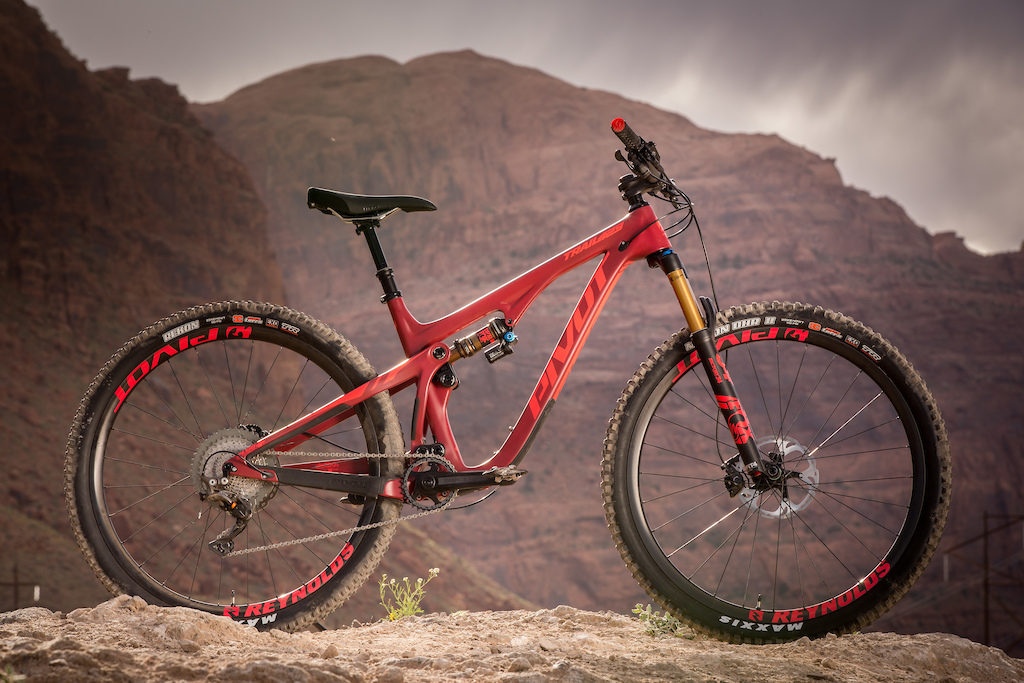
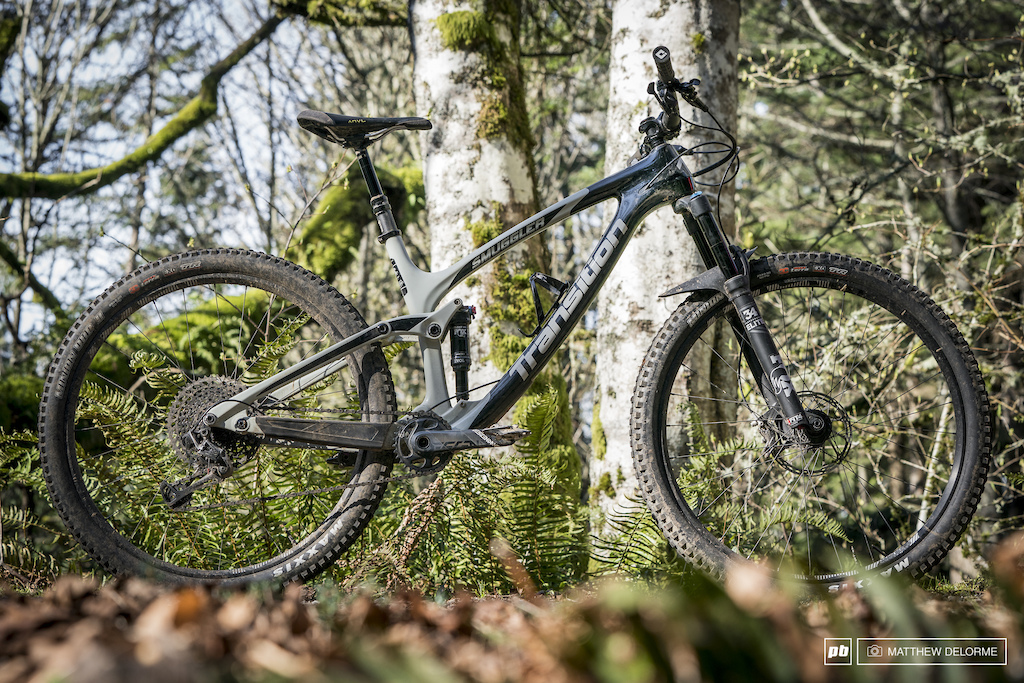
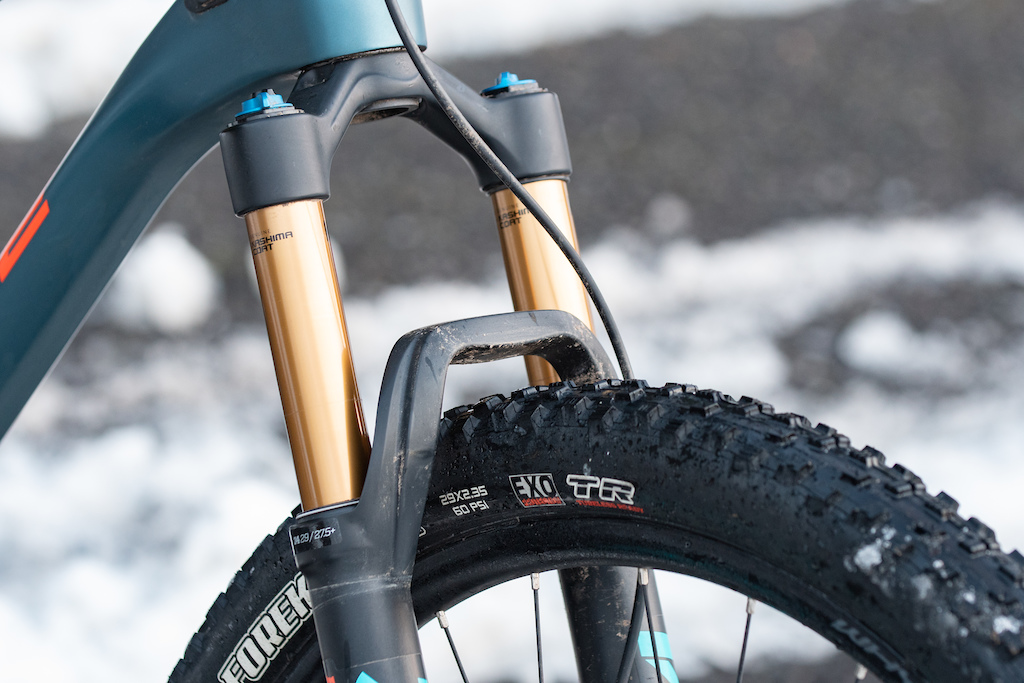

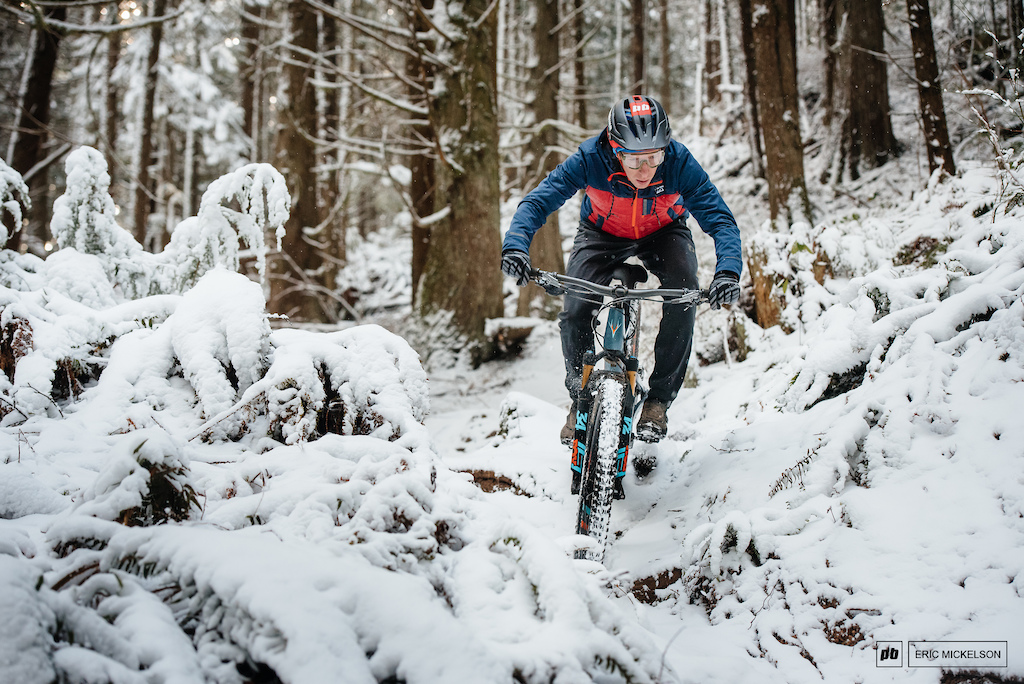

Same here, waiting for new technology moved down to XT/SLX
I was looking at their bikes last year and found that in order to get one outside the UK i would have to order directly because the german dealers listed on their website didn't have anything in stock.
Also it's clearly in USD: "$5299 USD as tested."
In this case there’s no caveat necessary for the geo - it actually is long and slack.
There is a whole chunk of UK mtb’ers that have never touched natural trails.
They usually wear lycra and ride a Santa Cruz.
1) Your logic works for hardtails, but not for full suspension bikes. For full suspension bikes the HA doesn't change much when sagged because the front and back tend to drop about the same distance. That's one key metric riders typically use to determine how a bike might handle. Wheelbase, trail, BB height, and some others will change under sag, so those might be useful, but angles for fullies are relatively constant under sag. If you include differences in sag preferences, this becomes too complex an issue for a review article.
2) Sagged geo is complicated to measure, and complicated to understand. I have an idea of the sagged geo on my bike and spec'd it accordingly, but it took work and thought to understand, two things a casual rider probably won't want to put in. I didn't measure the sagged geo on my bike and choose parts accordingly; I rode it, considered how it felt, and changed what I wanted to change. Similarly, geometry table comparisons are used by consumers through comparison - we know some numbers for the bikes we've tried, so we can compare to a table of new numbers and get an idea of some handling characteristics.
tl;dr - You've got a good point but the logic is flawed for full suspension bikes. Although sagged geo is fascinating and useful, it's complicated, which makes unsprung geo is easier to compare and understand.
I do agree that angles change for a sagged hardtail whereas they don't do that as much on a full susser. Indeed front and rear may sag differently but the change in angle is nowhere as dramatic as it is on a hardtail. I agree with you on that one. What I do mean to say that the position of the front axle to the bars is more important than the amount of suspension travel. Add to that reach, stack (as far as it wasn't already covered in the other measurements) and chainstay length and it more or less gives you an idea both for how much room you have and how you can distribute that between both wheels (for standing riding). So in the (full suspension) example I mentioned above both bikes have the same top of headtube to axle distance and angle so they could be comparable, even though the Whyte has less travel. So it would be fairer to compare the Whyte to a 160mm travel fully than to a 120mm marathon bike.
I do agree that sagged geometry is difficult and there are loads of variables, but I do think manufacturers could at least give you numbers based on how they think the bike is to be tuned for the intended purpose. You can always add a longer fork, add more sag in the rear, run a bigger front wheel etc to tune it to your preferences and get an idea what it would be like. Cotic does that, so why wouldn't others be able to do the same? Completely unsprung is a long way from what the bike would be like when ridden. Chainstay length in particular doesn't make sense unsprung as it doesn't matter anyway if there is no weight on it. Sure for loads of bikes it more or less goes a similar arc (increases towards the sag point and then shortens again) but for both high pivot bikes (like the Craftworks ENR) as well as bikes with a BB centered pivot (like the DMR Bolt Long) these measurements are very different. I trust bike manufacturers design their bikes around sagged geometry and make sure they still remain in the usable envelope when the suspension hits the extremes. But the sagged geometry is the basis, so why not give that to the customer to base their decisions upon? Trial and error helps and probably works great for those who've spend a lot of time on similar bikes. But if you don't want to waste money on experiments, it is best to be able to compare the sagged geometry to that of your current bike and then decide up front which length fork you want, a reach adjust or angled headset etc. It may still not be perfect right from the start, but you'll definitely be much more likely to have close enough. And then sure that still doesn't tell how the bike reacts under dynamic loading (braking, cornering etc) but then again the unsprung geometry wouldn't give you that either. And hopefully you'll be able to tune the suspension behavior to your liking.
I think we agree with each other for the most part. Sagged geo is helpful, although I don't think it's that important for most consumers. We can speculate as to how a particular bike will change under sag, but the only way to know for sure is to make some measurements. My thought is that, for most bikes with typical design, the sagged geo is similar to the unsagged geo, besides the obvious changes. (Not to write off small dimensional changes - we can feel a difference between wheel sizes, which have pretty similar numbers for attack angles and gyroscopic forces, as an example.) I'd also argue that on bikes with more extreme geometry changes when suspension acts, like the Chromag hardtail, sagged geo is provided. You're right when you say that manufacturers design around sagged geo and choose not to share it, so here's my speculation on why.
From a design standpoint, it's very important. This is similar to designing a car: the designs of suspension, braking, or engine management software are crucial in design and strongly impact performance, but the end consumer usually doesn't care. They want a car that is fun and reliable and affordable, and I'm willing to bet most bike consumers want the same things, without needing to understand linkages and geometries and everything, however important they may be. This article is written for consumers that want to know general stuff - is it fun? Does it climb as well as it descends? What's the purpose of the bike? etc, etc.
Happy riding.
Oh and bohns's yeti is not a horst link bike so not sure why you lashed out at him and what his bike has to do with him disagreeing with you on HL...
They're so almost amazing - the power and modulation are the best ever, but as this reviewer found, the bite point is STILL inconsistent. Which can be really annoying
Other than that, the braking power of my XTs aren't affected. I imagine the XTRs to be the same.
In any case, perhaps the higher end TRPs fare better. But I think it could be that the proprietary mineral oil for the TRPs cope better in the cold weather(citation needed). while low end brakes(like the ones on my DJ) are always going to have bite point issues because they're low end brakes.
In temperatures that are above freezing, my Shimano brakes work flawlessly.
You do get kinda used to it, but it's always there.
It's not an issue with mineral oil though as my Direttissimas run great even at -10°C. It's servo wave and Shimano's mineral oil that in combination sucks. You could bleed the brake with Putoline HPX as many Germans have done and it works in most of the cases.
The new Hayes look really nice. Anybody have or try them yet?
Just buy some LHM Citroen mineral oil made for cold temperature. Easy to find in Europe, I don't know about North America though. But it gets the job done if you want to make the best of you Shimano brakes below -5°C to -10°C.
I've been using LHM oil for a few years with ZERO issues.
My ZEE and Deore breaks feel a bit less spongy with LHM, especially the Deore's feel more powerful.
So I have two questions for you.
1. The trails you used - are they more 'Enduro Like' or true XC/Trail?
2. How come other reviews said while its 'Heavier' then say a Tallboy multiple people smashed their KOM's on the S-120 and won endurance races on them too....while you gave it a 'middle of the road' review - what gives?
I don't believe this is a 'One Bike type of Bike Either' I think people may be better off with the G150 if they need one bike to rule them all.
Do you think the area you used was a little 'To Much' for this type of bike???
All the best!
PS Yes I have 4 bikes and NO I am not a dentist - I just love riding but I also like riding the correct bike for the right applications.
It is unbelievable (and pathetic) that Shimano still can’t get brake right. Not that it matters because nobody can actually buy them.
Maybe I'm just trying to talk myself into another bike, but new geo appears to offer what was formerly a DH wheelbase, combined with better pedaling through a range of saddle heights. Despite the maneuverability penalty, it's still closer to All-Mountain. Tell me it ain't so.
Have you rode a 29er S150 or just going by another bike you've ridden?
As an honorable mention, the Guerilla Gravity Trail Pistol is a carbon/aluminum 29er with 120mm travel, reach 483/493, 426mm chainstays, fffective STA 78 deg (130mm fork), HTA 65.9deg. This bike will happilly take a 140mm fork for a more rowdy ride or drop to a 120mm for a more XC ride. It'll also morph into a long travel 29er, short travel 27.5, or a long travel 27.5. I believe the pricing is fair at $3700 base and $5700 full boogie. Oh, and they're made in Colorado
Wouldn't 1200mm of wheelbase been adequate for 120mm travel? The large Mayhem 130 tested recently was about 1200mm....
It's sad that we need to be reminded that XT/R shifters can drop up two gears.
Maybe the springs in your shifter are worn/weak?
I love XT. They just need to put out a 10spd wide range for weirdos like me LoL
Close enough? If by weirdo you mean sensible person not fettered to racing/vanity....
The materials around the cable pinch bolt on my GX 12 der are sufficiently cheap such that cable comes loose every 30 hours. Some workhorse. Maybe XO is better, but I'm reverting to 10 11-42t for now.
I'm no fan of SRAM ever since their gripshit days. On my Kona I have an x9 type 2 rear mech shifted by an x7 pod and it just doesn't compare to XT IMO. The only nice thing about it is you can upshift 5 gears at once...
Thanks for the loctite reminder.
m.imgur.com/gallery/2HmqSZZ
It’s a long slack short travel bike that makes it Giddy upduro.
More than enough bike for most people. This thing rips both ways
Just because you don't want it doesn't mean its a 'waste of time effort and consumers money'
Do you feel the same about DH bikes, XC bikes etc if you don't 'get' them?
So essentially, your opinion is correct, others are wrong, if you don't see any demand then that's that, no demand.
Do you go about all aspects of life in the same way? Do you see the 'need' for XC race bikes, DH bikes, different types of cheese, clothes, cars, houses etc etc or if you don't 'see demand' should they not exist either?
Why are more and more people beginning to form the view that if they don't agree with it / see the point in it then rather than allow it as a choice for others state that it just shouldn't exist at all?
Pot, Kettle.
I borrowed a Trek Fuel which was 130mm travel. Not knowing the area (and having the brakes set up the wrong way round - come on US, get with the Moto style) i would have preferred my Switchblade with a bit more travel and "get out"(150/135 - although the 135 on DW just rides higher in the travel than other brands). I am sure if i got to know the trails better the 130 would be perfect 90% of the time. I know the guy with the KOM on StarWars and i think he smashed it on his 170mm enduro, but to be fair he´s a beast.
Save some sun for me when i get there
Let it go.
Check that build kit list.
... until I saw the bottom bracket height.
Why so high? Urgh.
For a 120mm travel bike, yes!
Don’t forget that you don’t ‘sag’ down as much...